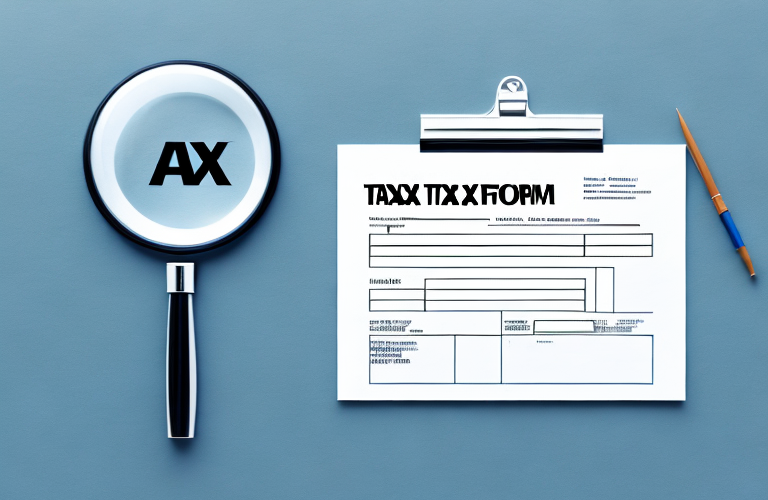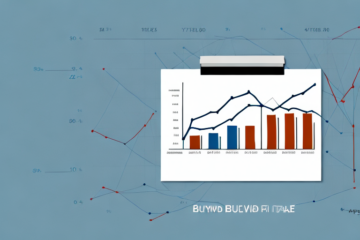Understanding the 1040 U.S. Individual Tax Return Form: A Guide to Common Finance Terms
The 1040 U.S. Individual Tax Return Form is one of the most important documents that every taxpayer should be familiar with. It is the form used by individuals to report their income, deductions, and credits to determine their tax liability. In this article, we will provide an in-depth guide to the 1040 U.S. Individual Tax Return Form and the common finance terms associated with it. By the end of this article, you should have a better understanding of how to fill out the form, avoid common mistakes, maximize your refund, and organize your finances for an easy filing process.
Individual Tax Return Form
The 1040 U.S. Individual Tax Return Form is a tax form used by individuals to report their income, deductions, and credits for the tax year. This form is divided into several sections, including personal information, income, adjustments to income, deductions and credits, payments, and taxes, and refund or balance due. Filing the 1040 U.S. Individual Tax Return Form is mandatory for anyone who meets certain income thresholds, regardless of their employment status or citizenship. Failure to file the form or delay in filing may result in penalties or fines.
It is important to note that the 1040 U.S. Individual Tax Return Form is not the only tax form that individuals may need to file. Depending on their sources of income and other factors, they may also need to file additional forms such as the Schedule A for itemized deductions or the Schedule C for self-employment income. It is important to carefully review the instructions and requirements for each form to ensure that all necessary forms are filed accurately and on time.
Additionally, individuals may be eligible for various tax credits and deductions that can reduce their tax liability or increase their refund. Some common credits and deductions include the Earned Income Tax Credit, the Child Tax Credit, and the standard deduction. It is important to review all available credits and deductions to ensure that the maximum benefit is received.
What is the Purpose of the 1040 U.S. Individual Tax Return Form?
The purpose of the 1040 U.S. Individual Tax Return Form is to report your taxable income, calculate the amount of tax you owe, and determine if you are eligible for any tax credits or deductions. The form is designed to ensure that everyone pays their fair share of taxes and that the tax system is applied uniformly across all individuals.
It is important to note that the 1040 form is not the only tax form that individuals may need to file. Depending on their specific financial situation, they may also need to file additional forms such as the Schedule A for itemized deductions or the Schedule C for self-employment income. Filing the correct forms accurately and on time is crucial to avoid penalties and ensure compliance with tax laws.
How to Fill out the 1040 U.S. Individual Tax Return Form?
Filling out the 1040 U.S. Individual Tax Return Form may seem like a daunting task, but with a little effort and organization, anyone can complete it accurately. The first step is to gather all your necessary documents, such as W-2 forms, 1099 forms, bank statements, mortgage documents, and other tax-related forms. Then, you need to carefully review each section of the form and enter your information correctly. Finally, you should review the form for errors and provide any additional documentation, such as proof of charitable donations or business expenses.
It is important to note that the 1040 U.S. Individual Tax Return Form has several different versions, including the standard 1040 form, the 1040A form, and the 1040EZ form. The version you use will depend on your individual tax situation, such as your income level and whether you are claiming certain deductions or credits. It is important to carefully review the instructions for each form and choose the one that best fits your needs.
Understanding Adjusted Gross Income (AGI) on the 1040 U.S. Individual Tax Return Form
Adjusted Gross Income, or AGI, is a critical figure on the 1040 U.S. Individual Tax Return Form. It is calculated by subtracting certain deductions and adjustments from your total income. AGI is used to determine your eligibility for various tax benefits, such as itemized deductions, retirement savings contributions, and education credits. Understanding AGI is crucial when filling out your tax return, as it can significantly affect your tax liability and potential refund.
One important thing to note is that AGI is not the same as taxable income. After calculating AGI, you must make additional adjustments to arrive at your taxable income, which is the amount of income that is actually subject to taxation. These adjustments include subtracting either the standard deduction or itemized deductions, as well as any personal exemptions. It is important to carefully review the instructions on the 1040 form to ensure that you are correctly calculating both your AGI and taxable income.
Deductions and Credits on the 1040 U.S. Individual Tax Return Form
The 1040 U.S. Individual Tax Return Form allows taxpayers to claim various deductions and credits to reduce their taxable income and lower their tax liability. Deductions refer to expenses that taxpayers can subtract from their income, such as mortgage interest, charitable donations, and state and local taxes. Credits, on the other hand, are dollar-for-dollar reductions of the amount of tax you owe, such as the Earned Income Tax Credit, Child Tax Credit, and Education Credits. Claiming deductions and credits can be complex, and it is essential to understand the rules and requirements associated with each one.
One important thing to note is that some deductions and credits have income limits or phase-out ranges. For example, the Child Tax Credit begins to phase out for taxpayers with a modified adjusted gross income above $200,000 for single filers and $400,000 for married filing jointly. Additionally, some deductions, such as the deduction for medical expenses, require that the expenses exceed a certain percentage of your income before you can claim them.
It is also important to keep accurate records and documentation to support your claims for deductions and credits. The IRS may request proof of your expenses or eligibility for certain credits, and failing to provide adequate documentation can result in penalties and interest on any unpaid taxes. Seeking the advice of a tax professional or using tax preparation software can help ensure that you are claiming all the deductions and credits you are eligible for and avoiding any costly mistakes.
Common Finance Terms Related to the 1040 U.S. Individual Tax Return Form
The 1040 U.S. Individual Tax Return Form is full of finance terms that may be unfamiliar to some taxpayers. Some of the most common terms include taxable income, exemptions, standard deduction, marginal tax rate, and credits. Understanding these terms is critical to correctly fill out the form and avoid costly mistakes.
One important term to understand is taxable income, which is the amount of income that is subject to taxation after deductions and exemptions are taken into account. Exemptions are deductions that reduce your taxable income, such as for dependents or certain expenses. The standard deduction is a set amount that can be deducted from your taxable income, depending on your filing status.
Another key term is marginal tax rate, which is the percentage of tax that is applied to the last dollar of your taxable income. This rate can vary depending on your income level and filing status. Credits are also important to understand, as they can directly reduce the amount of tax you owe. Examples of credits include the Earned Income Tax Credit and the Child Tax Credit.
How to Avoid Common Mistakes While Filling out the 1040 U.S. Individual Tax Return Form?
Mistakes when filling out the 1040 U.S. Individual Tax Return Form can be costly and may result in additional fees or penalties. Some of the most common mistakes include incorrect social security numbers, wrong calculations, missing signatures, and omitted income. To avoid these mistakes, it is essential to double-check all information, seek professional advice if necessary, and file before the deadline to avoid any late fees.
Another common mistake that taxpayers make when filling out the 1040 form is claiming incorrect deductions or credits. It is important to carefully review the eligibility requirements for each deduction or credit and ensure that all necessary documentation is included with the tax return.
In addition, taxpayers should be aware of any changes to tax laws or regulations that may affect their filing status or tax liability. Staying up-to-date on these changes can help prevent errors and ensure that the tax return is filed correctly.
Tips for Maximizing Your Refund on the 1040 U.S. Individual Tax Return Form
Everyone wants to get the most significant return possible from their taxes. Some ways to maximize your 1040 U.S. Individual Tax Return Form refund include claiming all available deductions, contributing to a retirement account, taking advantage of tax credits, and keeping good financial records. These strategies can help you lower your taxable income and increase your refund.
Another way to maximize your refund is to file your taxes early. By filing early, you can avoid the last-minute rush and ensure that your return is processed quickly. This can help you get your refund faster and avoid any potential penalties for late filing.
It’s also essential to review your tax return carefully before submitting it. Double-check all the information you’ve entered, including your Social Security number, income, and deductions. Any errors or omissions could delay your refund or even trigger an audit by the IRS.
Understanding Tax Penalties and Interest on Late Payment or Non-Payment of Taxes.
Failure to pay taxes or filing taxes late can result in severe penalties and interest charges. The IRS imposes penalties for failing to file a tax return, paying taxes late, or not paying taxes altogether. Interest charges calculated based on the amount of money owed and the length of time the tax remains unpaid. These penalties and interest charges can be financially devastating, and it is critical to pay taxes on time and in full.
It is important to note that the penalties and interest charges can accumulate quickly. For example, the penalty for failing to file a tax return is typically 5% of the unpaid taxes per month, up to a maximum of 25%. Additionally, interest is charged on the unpaid taxes, currently at a rate of 3% per year. This means that if you owe $10,000 in taxes and fail to file a return for six months, you could be facing an additional $2,500 in penalties and interest charges.
If you are unable to pay your taxes in full, it is still important to file your tax return on time. The penalty for failing to file a tax return is much higher than the penalty for failing to pay taxes. By filing your return on time, you can avoid the failure-to-file penalty and reduce the amount of interest charged on the unpaid taxes. You may also be able to set up a payment plan with the IRS to pay off your taxes over time, which can help you avoid additional penalties and interest charges.
Differences Between State and Federal Taxes on the 1040 U.S. Individual Tax Return Form.
When filling out the 1040 U.S. Individual Tax Return Form, it is essential to understand the differences between state and federal taxes. Each state has its tax laws and regulations, and taxpayers must complete state tax returns in addition to their federal return, depending on their state of residency. Understanding the differences between these taxes can help taxpayers minimize their tax liability and avoid errors when filing.
One significant difference between state and federal taxes is the tax rates. While federal tax rates are the same for all taxpayers, state tax rates vary depending on the state. Some states have a flat tax rate, while others have a progressive tax system that taxes higher earners at a higher rate. It is essential to understand the tax rates in your state to accurately calculate your tax liability.
Another difference between state and federal taxes is the deductions and credits available. While some deductions and credits are available on both state and federal tax returns, others are specific to one or the other. For example, some states offer tax credits for installing energy-efficient appliances or making charitable donations to specific organizations. Understanding the deductions and credits available on your state tax return can help you maximize your tax savings.
Understanding Self-Employment Taxes on the 1040 U.S. Individual Tax Return Form.
If you are self-employed, you must pay self-employment taxes, which are taxes for Social Security and Medicare. This tax is in addition to income taxes and must be reported on your 1040 U.S. Individual Tax Return Form. Understanding how self-employment taxes work can help ensure you pay the correct amount and avoid any penalties or interest charges.
Self-employment taxes are calculated based on your net earnings from self-employment. This includes income from any freelance work, consulting, or business you operate as a sole proprietor. The self-employment tax rate is currently 15.3%, which is made up of 12.4% for Social Security and 2.9% for Medicare. However, you may be able to deduct half of your self-employment taxes on your tax return, which can help reduce your overall tax liability.
How to Amend Your 1040 U.S. Individual Tax Return Form if You Made a Mistake.
Even with the best intentions, mistakes on the 1040 U.S. Individual Tax Return Form can happen. If you make an error on your form, you should amend it as soon as possible to avoid any penalties or interest charges. To amend your return, you must complete Form 1040X, Amended U.S. Individual Income Tax Return and provide documentation for any changes made.
It is important to note that not all mistakes require an amended return. If the mistake is minor, such as a math error, the IRS will typically correct it for you. However, if the mistake is more significant, such as forgetting to report income, you will need to file an amended return.
It is also important to keep in mind that amending your return may result in a delay in receiving your refund. The IRS typically takes up to 16 weeks to process an amended return, so it is important to be patient and plan accordingly.
Tips for Organizing Your Finances for a Smooth Filing Process.
Organization is key when it comes to filing your 1040 U.S. Individual Tax Return Form. Some tips for organizing your finances include keeping all important documents in one place, using software or apps to track expenses, and setting up a reminder for tax deadlines. Following these best practices can make the filing process more manageable and less stressful.
In conclusion, the 1040 U.S. Individual Tax Return Form is a critical document that every taxpayer must understand. By familiarizing yourself with common finance terms, understanding deductions and credits, and avoiding common mistakes, you can navigate tax season with confidence and maximize your refund. Remember to stay organized and seek professional advice if necessary, and always pay your taxes on time and in full to avoid costly penalties and interest charges.
Another important tip for organizing your finances is to create a budget and stick to it. This can help you keep track of your expenses and ensure that you have enough money set aside for taxes. Additionally, consider setting up automatic payments for bills and taxes to avoid missing deadlines and incurring fees.
It’s also important to keep accurate records of all your financial transactions throughout the year. This includes receipts, invoices, and bank statements. By keeping detailed records, you can easily track your expenses and deductions when it comes time to file your taxes.










